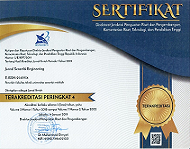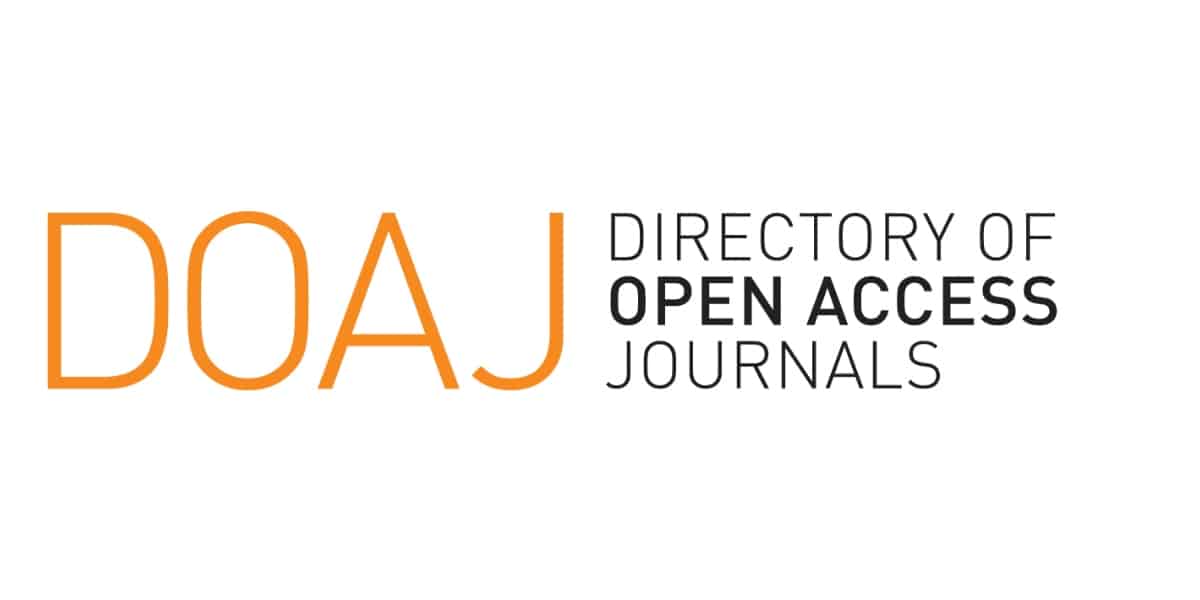Meningkatkan Profitabilitas UMKM Pengrajin Gerabah dengan Efisiensi Keuangan dan Optimalisasi Produksi
Keywords:
Pottery SMEs, Financial Efficiency, Production Optimization, Risk Management, Sustainable GrowthAbstract
This article aims to analyze strategies for enhancing the profitability of pottery SMEs through financial efficiency and production optimization. The methods employed include literature review, secondary data analysis, and case studies focusing on operational cost management, product diversification, and digital marketing. The study identifies key gaps, such as inefficient capital management and reliance on traditional production methods, which lead to low profit margins and limited market access. The findings reveal that financial efficiency strategies, such as cash flow management and stock control, can reduce operational costs by up to 20%. Additionally, production optimization through simple technologies, like automated drying ovens, increases daily productivity by 30%. Product diversification and digital marketing effectively expand market reach, stabilize revenues, and enhance competitiveness in local and global markets. The implications of this research emphasize the importance of integrating operational efficiency, product innovation, and risk management to achieve sustainable growth. This article contributes practical guidelines for pottery SMEs to improve profitability and ensure business sustainability in dynamic economic environments.
References
Referensi
[1] M. M. Ayu Krishna Yuliawati, S. P. Rofi Rofaida, M. T. Mohamad Sapari Dwi Hadian, B. P. Gautama, A. N. Aryanti, and M. M. SE, Kebangkitan UMKM Melalui Inovasi Geoproduk Berbasis Geodiversity & Kearifan Lokal. Penerbit Andi, 2021.
[2] S. E. Sopanah, A. CA, S. Bahri, M. Ghozali, and M. A. SH, Ekonomi Kreatif Berbasis Kearifan Lokal. Scopindo Media Pustaka, 2020.
[3] Z. F. Afra, “Strategi Peningkatan Daya Saing UMKM di Banda Aceh Melalui Analisis Faktor-faktor Penghambat dan Solusi.” UIN Ar-raniry, 2024.
[4] M. C. Anwar, S. A. Andini, E. A. Adellia, and T. Yulaeli, “Peran Transformasi Digital dan Tantangan Inovasi terhadap Keberlanjutan UKM di Indonesia (Studi Literature Review),” J. Manajemen, Akunt. dan Logistik, vol. 2, no. 2, 2024.
[5] T. F. Teuku, Z. Zulkarnen, and Z. Taib, “Strategi Pengelolaan Keuangan Menggunakan Aplikasi E-Wallet Pada Pelaku Bisnis Coffee Shop Kota Medan Di Era Digitalisasi,” J. Investasi Islam, vol. 8, no. 1, pp. 39–57, 2023.
[6] R. E. Cerchia and B. Pozzo, The New Frontiers of Fashion Law. MDPI, 2021.
[7] A. K. Sahu, R. K. Padhy, D. Das, and A. Gautam, “Improving financial and environmental performance through MFCA: A SME case study,” J. Clean. Prod., vol. 279, p. 123751, 2021.
[8] S. Xu et al., “An integrated fuzzy MCDM approach for manufacturing process improvement in MSMEs,” Ann. Oper. Res., vol. 322, no. 2, pp. 1037–1073, 2023.
[9] R. Budiarto et al., Pengembangan UMKM antara konseptual dan pengalaman praktis. Ugm Press, 2018.
[10] M. Nuryanti and S. Suparjiman, “Analisis Manajemen Risiko pada UMKM Konveksi, Rancaekek, Kabupaten Bandung,” PENG J. Ekon. dan Manaj., vol. 2, no. 1b, pp. 1654–1667, 2025.
[11] B. Render, J. Heizer, and C. Munson, Principles of operations management: Sustainability and supply chain management. Pearson, 2017.
[12] R. S. Kaplan and R. Cooper, Cost & effect: using integrated cost systems to drive profitability and performance. Harvard Business Press, 1998.
[13] D. S. Srbinoska, S. Hristova, and V. Kazic, “Why Budgeting in Small and Medium Enterprises Matters?,” Timisoara J. Econ. Bus., vol. 16, no. 2, 2023.
[14] S. C. Umeorah et al., “Artificial Intelligence (AI) in working capital management: Practices and future potential,” World J. Adv. Res. Rev., vol. 23, no. 01, pp. 1436–1451, 2024.
[15] A. Sirait and H. Basuki, “Analisis Manajemen Modal Kerja Sehubungan Dengan Pengukuran Profitabilitas UMKM (Studi Pada SP Alumunium),” ABIS Account. Bus. Inf. Syst. J., vol. 6, no. 2, 2018.
[16] A. Damodaran, Applied corporate finance. John Wiley & Sons, 2014.
[17] E. F. Brigham and J. F. Houston, Fundamentals of financial management. South-Western Cengage Learning, 2013.
[18] A. I. Rahmansyah, S. Masluha, J. Hendra, M. S. Bahri, and H. H. A. Ghalda, “Rekomendasi Pengembangan Optimalisasi Akuntansi dan Pengelolaan Keuangan untuk Meningkatkan Efisiensi Produksi Olahan Lele di CV. Chosyle,” J. Abdi Panca Marga, vol. 4, no. 1, pp. 44–54, 2023.
[19] P. Vrat, “Materials management,” Springer Texts Bus. Econ. DOI, vol. 10, pp. 978–981, 2014.
[20] K. N. Ifah, E. T. Wulansari, F. K. A. Anggraeni, and F. I. Septiviana, “Analisis Konsep Kelistrikan Dalam Penggunaan Beberapa Mesin Pengering Pertanian,” J. Informasi, Sains dan Teknol., vol. 7, no. 1, pp. 131–144, 2024.
[21] P. Burnap et al., “Chatty factories: A vision for the future of product design and manufacture with IoT,” 2019.
[22] M. Güldenpfennig, K. S. Hald, and A. Hansen, “Productivity improvement and multiple management controls: evidence from a manufacturing firm,” Int. J. Oper. Prod. Manag., vol. 41, no. 6, pp. 991–1017, 2021.
[23] J. N. Kaligis, “Empowering the Traditional Pottery Entrepreneur Community through the Use of Technology to Maximize Business Income in Indonesia,” Int. Assulta Res. Engagem., vol. 1, no. 1, pp. 55–63, 2023.
[24] W. Liu and K. Atuahene-Gima, “Enhancing product innovation performance in a dysfunctional competitive environment: The roles of competitive strategies and market-based assets,” Ind. Mark. Manag., vol. 73, pp. 7–20, 2018.
[25] S. Utama, R. Yusfiarto, R. R. Pertiwi, and A. N. Khoirunnisa, “Intentional model of MSMEs growth: a tripod-based view and evidence from Indonesia,” J. Asia Bus. Stud., vol. 18, no. 1, pp. 62–84, 2024.
[26] M. Rajan, S. M. Datar, and C. T. Horngren, Cost Accounting, Global Edition. Pearson Education UK, 2015.
[27] E. F. Brigham and J. F. Houston, “An Overview of Financial Management,” Fundam. Financ. Manag., 2012.
[28] E. Vasileiou, N. Georgantzis, G. Attanasi, and P. Llerena, “Green innovation and financial performance: A study on Italian firms,” Res. Policy, vol. 51, no. 6, p. 104530, 2022.
[29] A. H. Barkatullah, H. Ahmad, and R. Khairandy, “Digital Marketing Challenges in Traditional Markets: Developing Collaboration Models between Traders and Local SMEs in Banjarmasin City,” Libr. Prog. Int., vol. 44, no. 3, pp. 1756–1766, 2024.
[30] H. Gupta and M. K. Barua, “Identifying enablers of technological innovation for Indian MSMEs using best–worst multi criteria decision making method,” Technol. Forecast. Soc. Change, vol. 107, pp. 69–79, 2016.
[31] E. M. Olson, K. M. Olson, A. J. Czaplewski, and T. M. Key, “Business strategy and the management of digital marketing,” Bus. Horiz., vol. 64, no. 2, pp. 285–293, 2021.
[32] P. Kotler, K. L. Keller, M. Brady, M. Goodman, and T. Hansen, Marketing Management 3rd edn PDF eBook. Pearson Higher Ed, 2016.
[33] M. A. Schilling, Strategic management of technological innovation. McGraw-Hill, 2017.
[34] T. Mishra, S. Chatterjee, and J. J. Thakkar, “Effect of coronavirus pandemic in changing the performance barriers for textile and apparel industry in an emerging market,” J. Clean. Prod., vol. 390, p. 136097, 2023.
[35] D. Kumar and D. Chandra, “A hybrid framework to model resilience in the generic medicine supply chain of MSMEs,” Benchmarking An Int. J., vol. 30, no. 6, pp. 2189–2224, 2023.
[36] S. Sehnem, A. Piekas, C. B. Dal Magro, J. Fabris, and A. Leite, “Public policies, management strategies, and the sustainable and competitive management model in handicrafts,” J. Clean. Prod., vol. 266, p. 121695, 2020.
[37] C. L. Culp, The risk management process: Business strategy and tactics, vol. 81. John Wiley & Sons, 2001.
Downloads
Published
Issue
Section
License
Copyright (c) 2024 Maryam, Rita Nengsih, Teuku Makmur (Author); Susanti, Arsyad, Ayu Rahmi (Translator)

This work is licensed under a Creative Commons Attribution 4.0 International License.
















